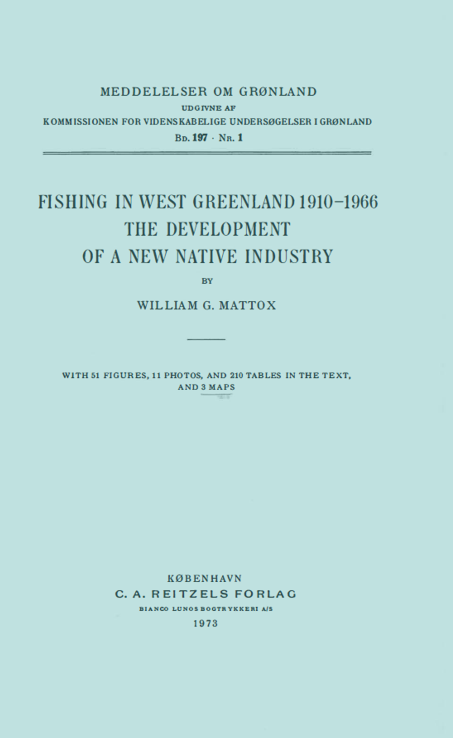Fishing in West Greenland 1910-1966, The development of a new native industry.
DOI:
https://doi.org/10.7146/mog.v197.147752Abstract
Greenland, a former colony of Denmark, became an integral part of that country in 1953 (as a type of county--amt}. Until the present century the Greenlanders pursued a traditional Eskimo hunting culture, but fishing was introduced in 1910 when it became apparent that hunting could not support the rapidly-growing population. Initial utilization of Greenland halibut, shark, and arctic char was soon joined by cod which began to appear in Greenland waters in increasing numbers from 1917. Favorable conditions for cod were created by a climate warming which, at the same time, adversely affected seal hunting. The fisheries along the southwest coast (where over 90 per cent of the Greenlanders live) developed along with the increase of cod. New fisheries of deep-sea prawns (1949} and Atlantic salmon (1960} have supplemented cod, but the Greenlanders' fishing industry has remained a fjord and inshore activity from rowboats and small cutters. At the same time an international fishery has developed off West Greenland, but until 1966 the Greenlandic fishery had not extended to these banks. This study traces the growth of the fishery of West Greenland and presents a picture of present-day fishing there through a sampling in three fishing locations.

Downloads
Published
How to Cite
Issue
Section
License
Coypyright by the authors and the Commision for Scientific Research in Greenland. No parts of the publications may be reproduced in any form without the written permission by the copyright owners.

